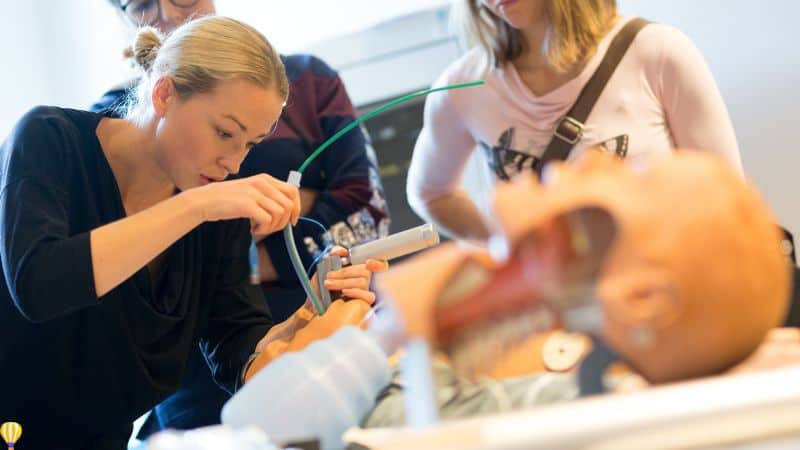When I was teaching high school, we designed yearly curriculums targeting key competencies to keep students competitive, especially for college exams like those at UP, Ateneo, and La Salle. In 2007, I shifted to leadership training and noticed a stark contrast: many Philippine companies lacked clear competency strategies or curriculums for their leaders.
This was a big surprise. Why were our expectations for high school students higher than for our managers and supervisors? This gap in professional training needs addressing.
Now, I focus on helping companies craft effective leadership training curriculums. If you’re ready to set higher standards and truly prepare your leaders, follow along. I’ll show you how it’s done, step by step, with clear, practical advice.
Build a blueprint for learning.
Let’s picture a scenario: you’re tasked with designing a leadership training curriculum. You know the audience well—dynamic leaders eager to improve, all with the common goal of enhancing their teams’ performance.
But how do you structure a curriculum that addresses varied needs while ensuring every session pushes these leaders toward excellence?
The primary goal of curriculum design is to create a roadmap that not only covers essential leadership competencies but also adapts to the unique challenges and needs of the participants. This means developing a structured yet flexible curriculum that leaders can relate to and apply directly to their work scenarios.
A well-designed curriculum serves as a comprehensive guide that takes leaders on a journey from their current skill level to where they need to be. It’s about crafting sessions that build on one another, creating a cohesive learning experience that is both engaging and transformative.1
This journey should be clearly mapped out, with each module building towards a defined set of skills and behaviors that are crucial for effective leadership.
The goal is to ensure that by the end of the program, leaders not only understand what good leadership looks like but have also practiced the skills necessary to embody it.
Keep learning deep and relevant.
However, designing such a curriculum is no small feat. One common challenge is ensuring the content remains relevant and engaging for all participants.
With leaders at different stages of their careers and with varying degrees of skill, some may find the content too basic, while others may feel overwhelmed.
Another problem arises when the curriculum is too rigid. Without the flexibility to adapt to individual or group needs during the program, the training can miss the mark, failing to address specific challenges or capitalize on unique opportunities for growth within the group.
Many curriculums falter by not integrating real-world applications. Leaders leave training sessions full of knowledge but unsure of how to implement these insights in their daily responsibilities. This gap between theory and practice can render even the most well-intentioned training ineffective.
Effective curriculum design must strike a balance between structure and adaptability. It requires a deep understanding of adult learning principles and an appreciation for practical, experiential learning that adults can relate to and apply immediately.
Your challenge, then, is to create a curriculum that is comprehensive yet not overwhelming, structured yet flexible enough to adapt to real-time feedback and changing group dynamics.
It involves careful planning. You must be willing to adjust on the fly to ensure that the training remains relevant and impactful for every participant.
It also means embedding ongoing assessment and feedback mechanisms throughout the curriculum to gauge understanding and engagement, allowing for timely interventions that can enhance the learning experience.
Design an effective leadership training curriculum.
- Start with a needs assessment. Conduct thorough assessments with potential participants to understand their current skills, gaps, and learning preferences. This foundation will help you tailor the curriculum to fit the group perfectly.
- Define clear learning objectives. For each module, set specific, measurable objectives that align with overall training goals. These objectives should be ambitious yet attainable, guiding the content and delivery of each session.
- Incorporate varied learning methods. Use a mix of lectures, interactive workshops, case studies, and real-world problem-solving exercises. This variety will cater to different learning styles and keep participants engaged throughout the program.
- Plan for flexibility. Build in opportunities to modify content based on participant feedback and facilitator observations. This adaptability can make the difference between good and great training.
- Emphasize practical application. Ensure each module includes practical exercises that allow leaders to practice new skills in a safe environment. Include scenarios that reflect their actual work challenges to make the learning directly applicable.
- Evaluate, evaluate, and evaluate. Set up mechanisms to continuously assess the effectiveness of the curriculum through participant feedback, quizzes, and practical assignments. Use this data to refine future iterations of the program.
Design a leadership training curriculum that not only informs but transforms. It will be a curriculum that leaders not only learn from but also look forward to, knowing every session brings them closer to mastering the art of effective leadership.
Step 4: Choose the Right Training Methods
- I encourage you to study learning experience design. This will help you see your curriculum design from the eyes of learners. ↩︎



